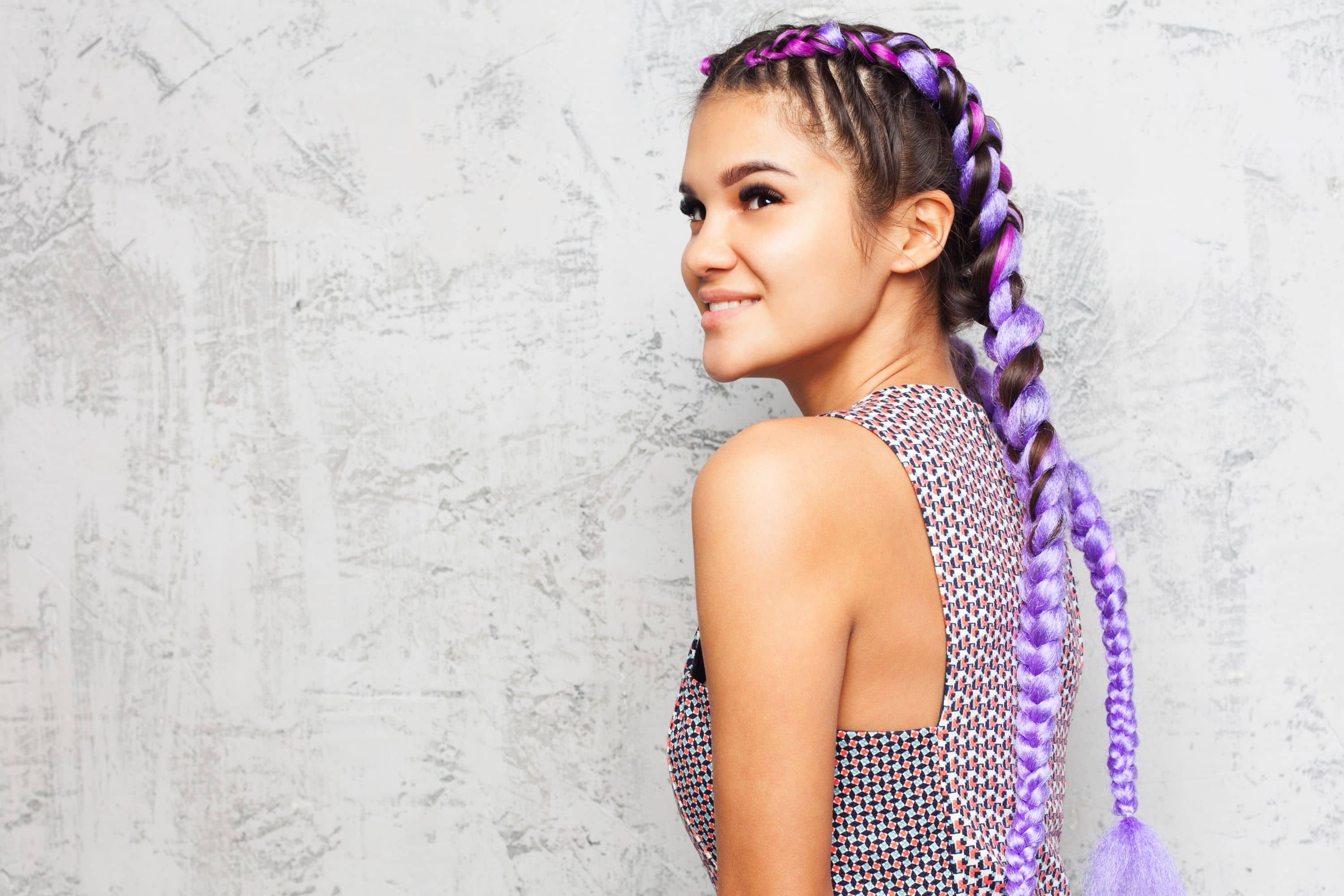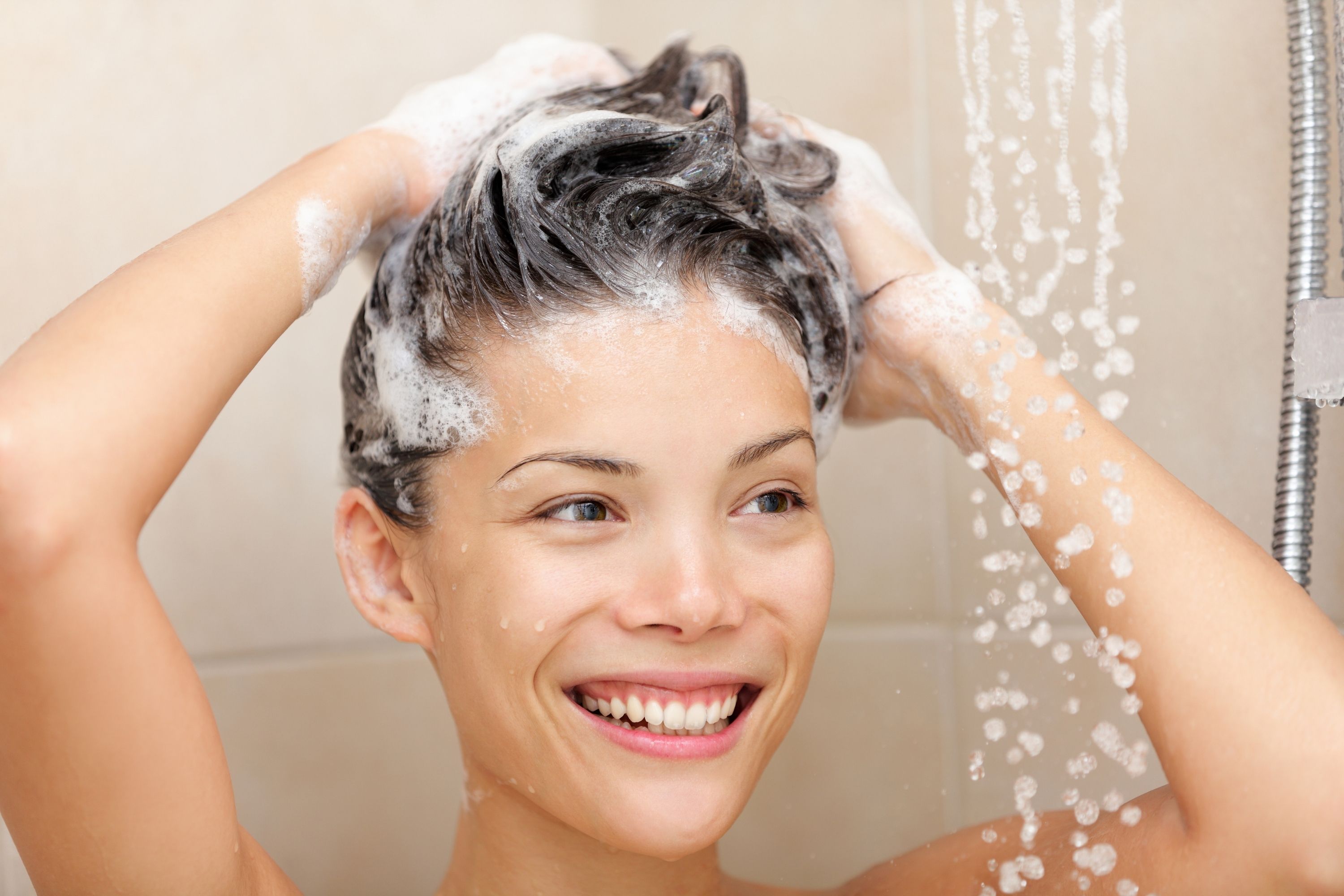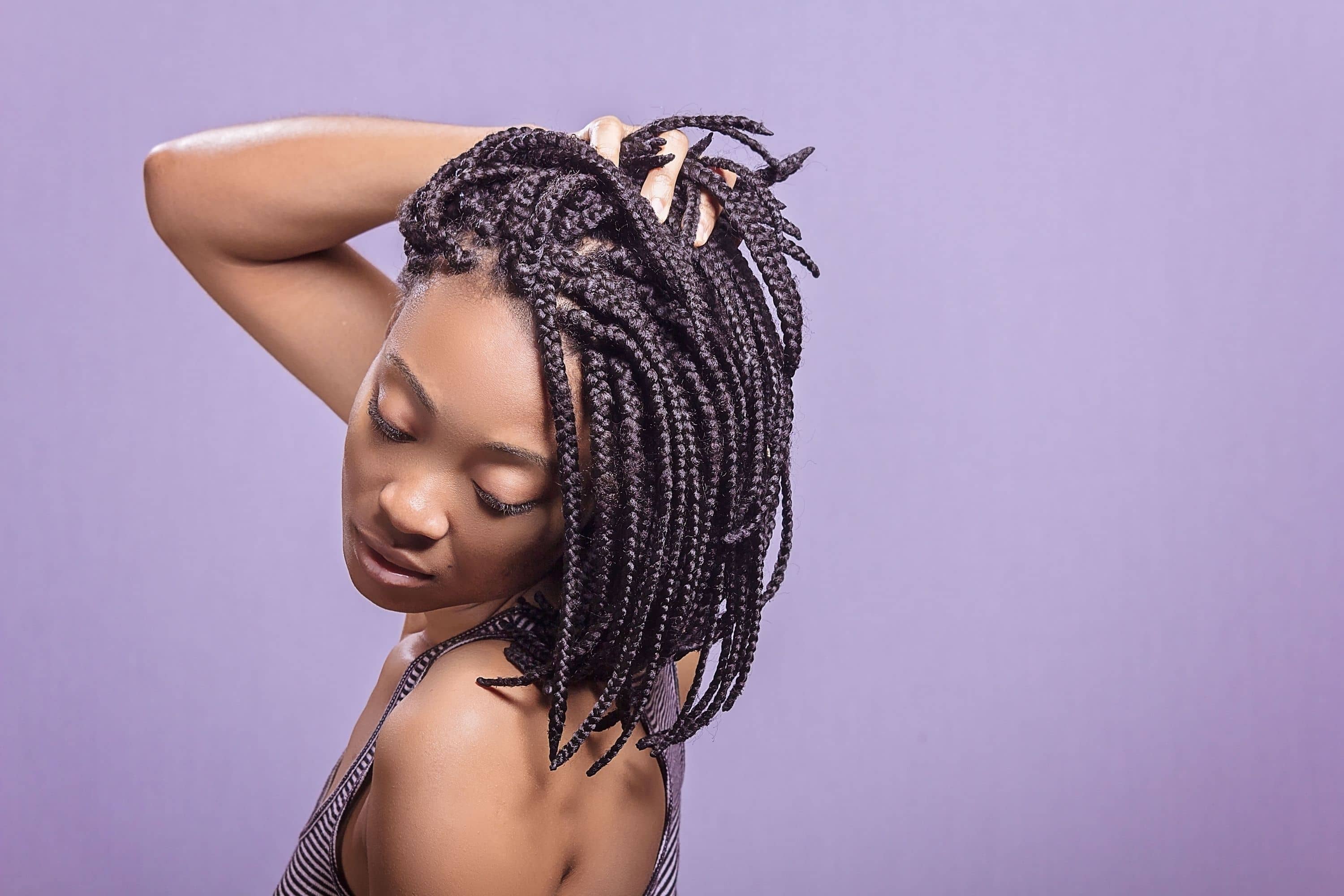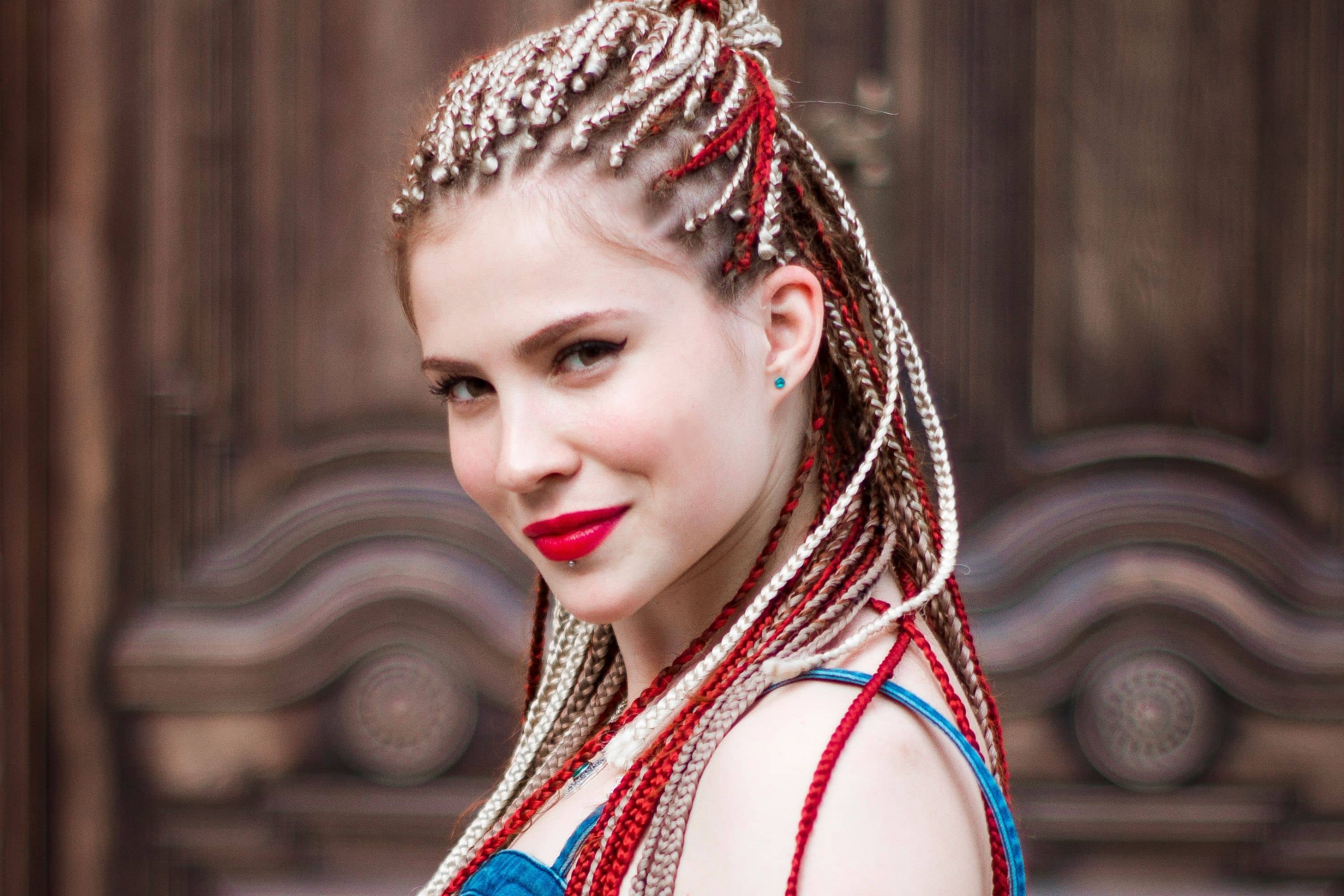Braids are a great and useful hairstyle that don’t require much care and can be left on your head for quite a long time. Besides, braids look cool and unusual thus attracting attention to their owner! However, girls who decorated their pretty heads with this African-born hairstyle, often face difficulties when they decide to remove the braids and get back to their native locks.
Quite many of them note that their locks become matting at the roots, and others even report the development of buildup! So what to do with my natural hair after taking out my braids, you might be wondering in this case?
Relax and don’t worry! We are here to help you learn how your native strands can be cared for and protected after taking out braids. With our brief yet informative guide your chevelure will be back to life, glossy and thick, as never before!
What to Do With My Hair After Taking Braids Out?
Removing braids may turn into quite a challenge for your hair since it is important to know how to take care of your tresses in order to retain their health and look. Most of you would probably think that mere washing and combing would be enough, but this is actually the direct way to damaged strands that will take you way more time, money, and effort later to restore them!
In fact, post-braid care involves moisturizing, nourishing, and conditioning to increase your mane’s retention and return its health. Like this, you will effortlessly refresh your hair and prepare it either for the next braiding round or for another styling experiment you lay your eyes on.
So to be able to maintain your hair after braids were removed, we suggest you read carefully the following instructions on hair care after braids removal. With their help, you will easily revive your locks and make them glossy, thick, and healthy again. And by the way, if you take care of your hair like this, you can be sure that your chevelure will avoid the issue of hair breakage, hair loss, and dull tresses for sure!
So to restore your mane, make sure you develop a healthy hair care routine on a regular basis.
No Brushing!
After braided hair is undone, do not brush your locks to detangle them! Instead, use your fingers to do this. Like this, the tresses will be detangled more delicately and carefully since you will be able to feel very well whether there are any knots or shed hair, or whether you are pulling your hair too much. It will help you to avoid hair breakage and loss as well.
When hair combing your mane, use your fingers to separate the chevelure carefully in groups. Start with detangling your locks from the very ends and keep on working your way through up to the roots.

Wash Your Hair
After undoing braids, your hair needs to be properly cleansed. For this purpose, we recommend you make use of a sulfate free clarifying shampoo. It will allow you to carefully clean the scalp after removing braids since the hair (and the scalp as well) can be rather greasy and oily after the braids are taken out!
With the help of clarifying shampoo, your head will be carefully and thoroughly cleansed from any scalp build up that could develop after the use of styling products.

Deep Conditioning Is a Must!
Another important step to take in your hair care routine is to deep condition the tresses. Find a really good and high quality product, apply it to your hair according to the instructions, and put on a plastic cap (a shower cap will be just fine!). Keep it on your strands for nearly twenty to thirty minutes, and then proceed following the instructions on your hair conditioner package.

Trim Your Locks
After braids are removed, ladies often face the same issue: their hair often gets damaged! If this is your case, don’t hesitate to give your mane a proper trim! If you are not afraid and you have experience in that, trim it yourself. In case you are not quite sure you will be able to do everything right, we would recommend you visit a salon and get trimmed by a professional hairdresser.
As you probably know, trimming is an essential and irreplaceable part of our hair health. It allows the locks to grow strong and long, as well as prevents split ends and other nasty effects. So don’t be afraid, your mane will grow back pretty soon!
And by the way, take into consideration that it would be better if you let your hair rest for at least a couple of weeks after the braids were removed! Like this, your chevelure will revive more or less and will be ready for another braid round, or cornrows, or whatever you decide to install on your head.
So this is the very basic and the easiest way of taking care after your unbraided hair. If you follow these steps precisely as we described them, you can be sure your hair will say thank you later!
How to Get Rid Of Hair Buildup When Braids Are Still In?
If you have already had braids, you definitely know that, if they are not taken care of as they should be, you will sooner or later end up with messed up braids. Dandruff, scalp build up, greasy hair – that is what you can potentially get if skipping a few easy braid care tips.
Of course, if one day you decide to get rid of those braids, you will have to go through a massive cleansing procedure to prepare your hair for the braid removal so that there will still be something on your scalp after braids are taken off!
But simply washing braiding hair is not enough if this is what you thought of first of all! Yes, the care process will be a bit more complicated and complex, but it’s worth your effort and time! So if you are wondering how to get that build up out of hair and how to wash your strands while the braids are still there, here is the guide for you.
- Get your hair ready by applying antiseptic oil
- Get rid of any excess dandruff or product buildup
- Shampoo and condition your hair
And now let us explain these steps to you in a step by step instruction.
So first you need to prepare your braided hair for the further cleansing procedure and apply antiseptic oil. A tea tree or peppermint oil will be just fine and will help you to soothe the scalp fast and easily.
After that step is taken, take a fine tooth comb to the root and clean any excess dandruff or product build up out of your hair. However, for braided hair, a fine tooth comb or a rat-tail comb might be even more effective! With their help, you will be able to easily maneuver in between the braids while undergoing the cleaning procedure. Such combs will also manage even the smallest flakes of dandruff or build up on the tops of your hair shafts or between the braids!
Also, if you are going to remove buildup after the braids are already taken off, we recommend you apply some loose pressure or rinse your unbraided hair lightly. Water will hydrate the ends that were tucked away before shampooing.
As for the washing procedure, most hair specialists suggest using either clarifying shampoo or hydrating one. However, you must keep in mind that shampooing is allowed only after your braids were cleansed from dandruff and build up leftovers!
As an alternative variant, think of co-washing, especially if you don’t feel like undergoing the complete washing procedure. Co-washing means that you will be using something that is moisturizing without having to complete the whole wash.
There is one more aspect that is good to keep in mind if you are wearing braids, especially if you are the owner of sensitive scalp skin. See, if your scalp is sensitive, or the skin of your head is dry, or you have psoriasis, you might not be able to keep braids for long enough first of all!
The reason is simple: there is more skin growing there when you have your hair tightly braided this way. But if you already have braids, then try to keep your scalp properly moisturized and apply natural oil to hydrate and soften your skin. It will also help you feel better when removing dandruff and build up since if you do this to the dry skin, you will feel way too unpleasant!

What Products to Use For Taking Care Of Unbraided Hair
Since your major goal is to keep your scalp moisturized and soft, consider using either natural oils or hair care products that contain those oils already. For instance, peppermint oil and tea tree oil are very good on the scalp, and avocado oil and jojoba oil will give you a perfect hydrating effect.
If you realize that your scalp still feels additional clarifying after all the previous cleansing steps were taken, we recommend you make use of apple cider vinegar. Feel free to use commercial hair care products that already have this ingredient being incorporated, but surely you can use it in its pure form as it is! Simply add it into your hair care products.
And finally, always remember about deep conditioning your hair!

What to Consider Before Have Your Hair Braided?
Braids are not just useful and cool, they are also quite tricky! There are a few nuances that you should know before you decide to have your strands braided.
- Your hair must be at least two inches long to be successfully braided. If it is three to four inches long, it’s just perfect!
- Curly hair is way easier to braid!
- Coily hair is an ideal candidate for braiding because of its texture and natural volume. Braids retain their shape and last much longer on this type of hair.
- Braids are also quite easy to make on wavy strands.
- For braiding straight hair, you will need additional products to “build up” the hair texture.
- Short hair can be braided, but certain styles like fishtail or zipper braids will need longer strands for being done!
- Short hair may not create the neatest braids!
- Consider the shape of your face before braiding so that the style fits you.
- Never braid your hair when it is still wet! It can damage the tresses.
With all these tips and recommendations in mind, you will be able to get ready for the upcoming braiding procedure properly and avoid the most common mistakes that people usually make, especially if they are new to this hair style and its specifics and nuances.
So now you know perfectly what to do with hair after taking out braids! With these tips and recommendations, we are sure that your hair will restore sooner than you expect after you take the braids off. Braids can be very handy sometimes, especially in summer or winter time when you don’t have much time on taking care of your hair, or when it gets dirty and greasy way too soon!
However, this protective hair style also requires proper treatment and care, even though not so often as normal unbraided hair. So if you decide to get your locks braided one day, make sure you know how to bring them back to life later to have healthy and strong tresses again.
[wp-faq-schema title=”Frequently Asked Questions”]

Are braids bad for your hair? I want to try and have my hair braided but I heard that hair often turns damaged after the braids are taken off! Is that true?
Well, hair will be slightly “tired” after braids indeed, but whether it will be damaged or not depends on you and how carefully the braids will be removed. So for the removal, go to the salon only! And also, remember to take proper care for your braids. Then you will have no problems after removing them.
And no, braids initially are not bad for our hair.
When my hair was braided, it took my hairdresser four hours to finish it! I thought I’d die in that chair! How much time does taking out braids take? Is it the same long?
Well, don’t want to disappoint you, but yes. My braids took me more than 5 (!) hours to take them off, but I had quite long hair back then so perhaps this is the reason.
dont get braids if ur not black lol they look appalling on white girls. plus theyre MADE FOR 4c hair texture. goodbye